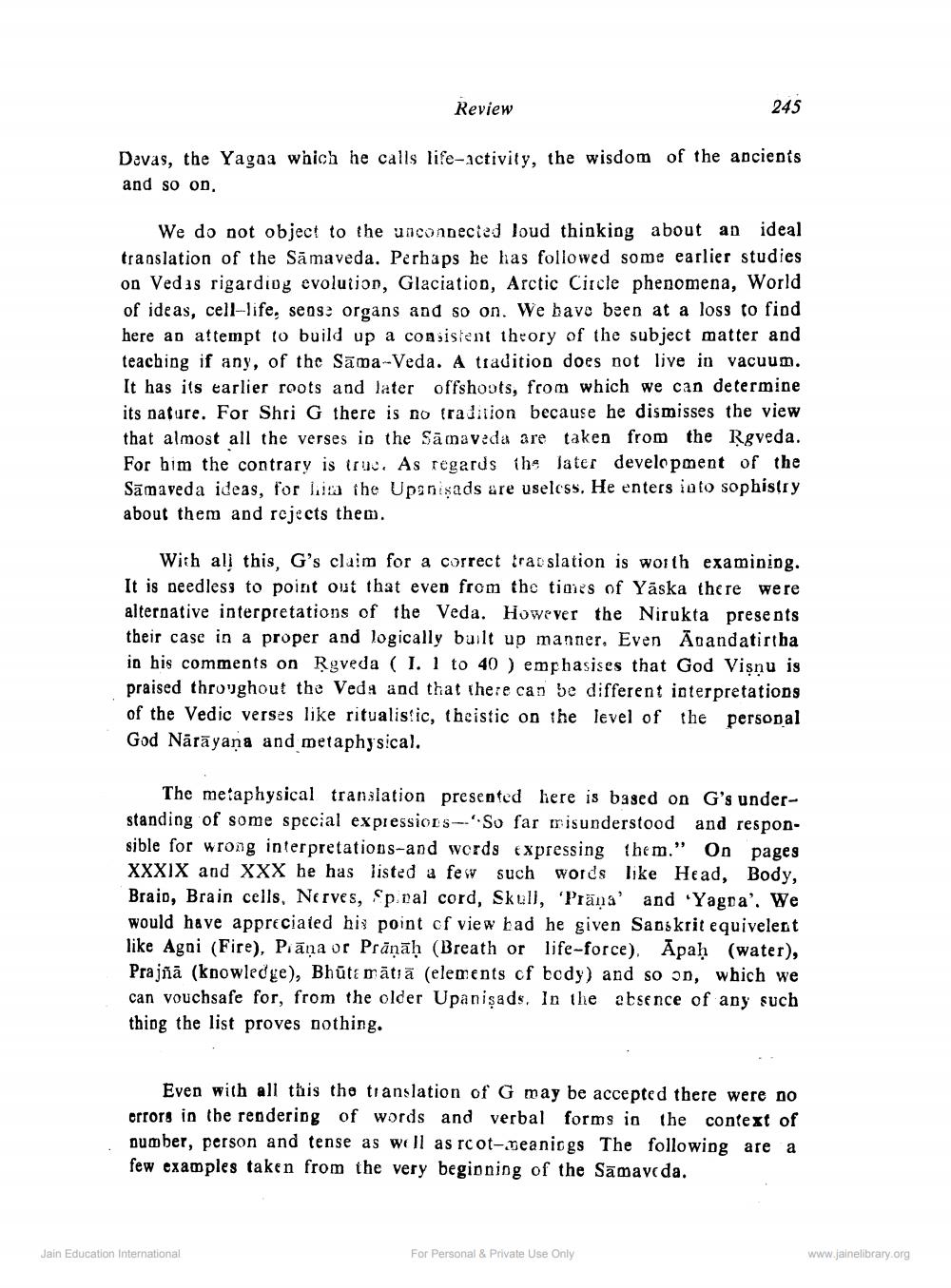________________
Review
245
Devas, the Yagoa which he calls life-activity, the wisdom of the ancients and so on.
We do not object to the uncondecied loud thinking about an ideal translation of the Sāmaveda. Perhaps he has followed some earlier studies on Vedas rigarding evolution, Glaciation, Arctic Circle phenomena, World of ideas, cell-life, seos: organs and so on. We bave been at a loss to find here an attempt to build up a consistent theory of the subject matter and teaching if any, of the Sāna-Veda. A tradition does not live in vacuum. It has its earlier roots and later offshoots, from which we can determine its nature. For Shri G there is no radition because he dismisses the view that almost all the verses in the Sāmavada are taken from the Rgveda. For him the contrary is trus. As regards the later development of the Sāmaveda ideas, for him the Upanişads are useless. He enters into sophistry about them and rejects them.
With all this, G's claim for a correct translation is worth examining. It is needless to point out that even from the tions of Yaska there were alternative interpretations of the Veda. However the Nirukta presents their case in a proper and logically built up manner. Even Āgandatirtha in his comments on Rgveda (1.1 to 40 ) emphasises that God Vişnu is praised throughout the Veds and that there can be different interpretations of the Vedic verses like ritualistic, theistic on the level of the personal God Nārāyana and metaphysical.
The metaphysical translation presented here is based on G's understanding of some special expressions-. So far misunderstood and responsible for wrong interpretations-and words expressing them." On pages XXXIX and XXX he has listed a few such words like Head, Body, Braio, Brain cells, Nerves, Spinal cord, Skull, Präna' and 'Yagra'. We would have appreciated his point of view bad he given Sanskrit equivelent like Agni (Fire), Piāņa or Prāņāḥ (Breath or life-force). Āpah (water), Prajñā (knowledge), Bhūta mātā (elements of body) and so on, which we can vouchsafe for, from the older Upanişads. In the absence of any such thing the list proves nothing.
Even with all this the translation of G may be accepted there were no errors in the rendering of words and verbal forms in the context of number, person and tense as well as root-meanings The following are a few examples taken from the very beginning of the Sāmaveda.
Jain Education International
For Personal & Private Use Only
www.jainelibrary.org




